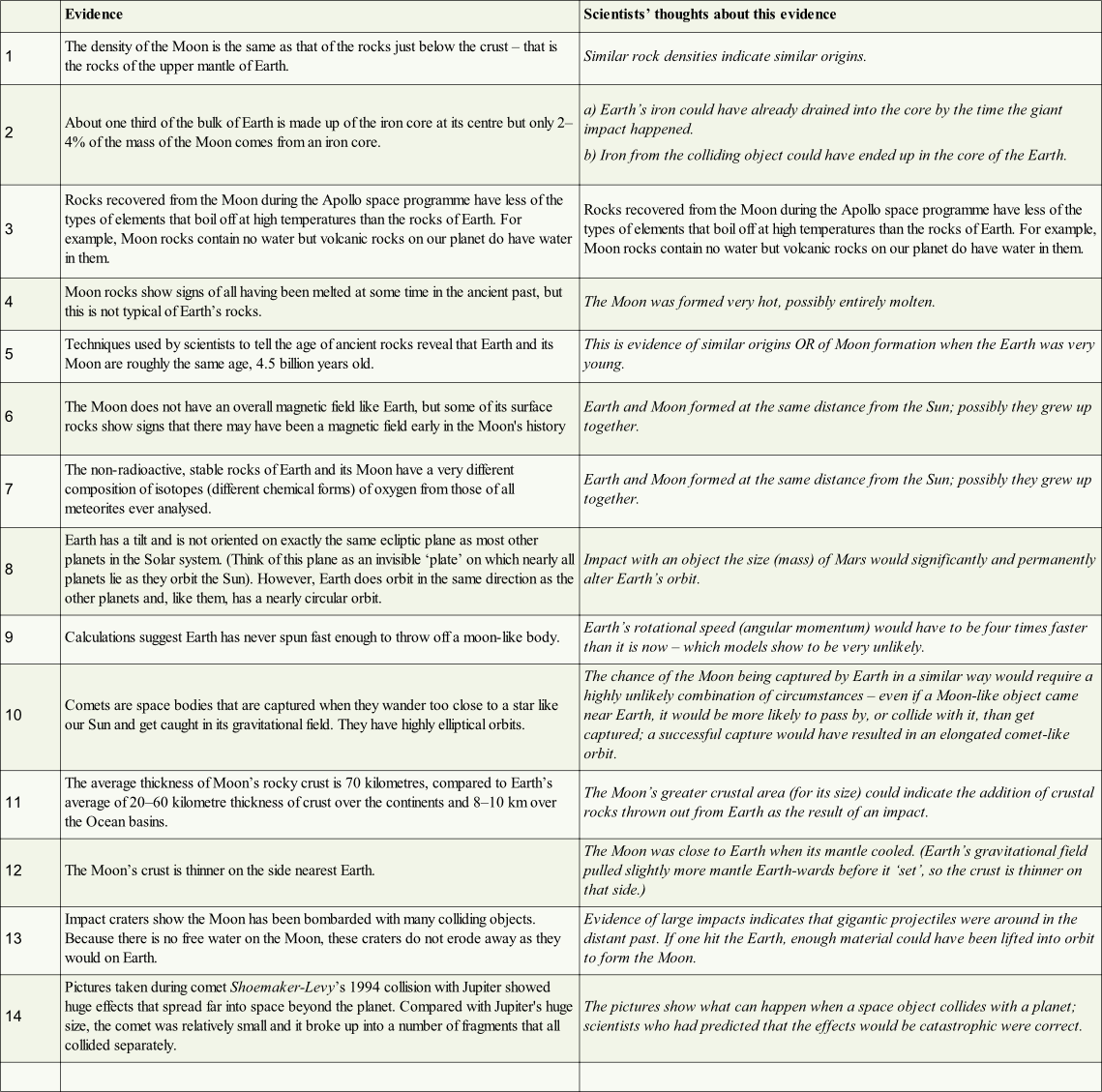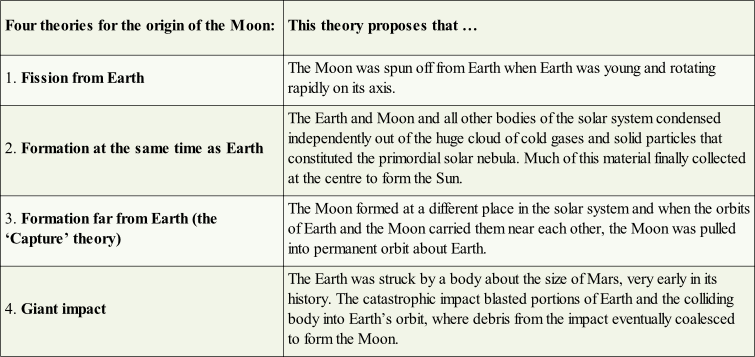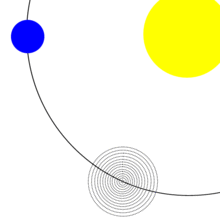
When confronted with the evidence from the lunar rocks brought back from the Apollo missions, it was difficult to confirm theories 1-
As a result of the pieces of evidence in the table above, in 1984, a new theory of the moon's origin began to gain attention. The new theory stemmed from the recognition that the early solar system 4,500 million years ago was a more violent place than had been previously assumed. Rather than being filled with swarms of 10 km diameter planetesimals accreting directly into the four inner planets, it was realized that accreting matter would form embryonic planets with a large range of sizes in closely spaced orbits. The final stages of planetary formation would involve the coalescence of often rather large bodies, punctuating this era with giant impacts in which bodies of comparable size crashed into one another at high speed. The chaos of this era explains the wide variations in orbital inclinations, eccentricities, rotational periods and spin axis directions observed among the inner planets at present.
A giant impact provides just the right circumstances for a body with the moon's peculiar chemical composition to arise according to this new theory. The vapor squirted from the contact point between the proto-
The computer-
This simulation did not require any super computer. I ran it using a four-

The moon's origin has been the subject of scientific speculation since ancient times. From the “Man on the Moon” theory to the cheese composition theory of the moon, the moon has definitely had its place in history as an icon of controversy. Galileo in 1609 took great leaps forward in observational astronomy and showed, probably to the dismay of others, that the moon is a rocky body like our earth. Of course, his heliocentric stance of the solar system nearly got him burnt at the stake from the religious leaders of his time so any other theories he might have had on the universe took a sudden halt. Society now has in some sense become a little more civilized and a little more tolerant of more modern theories of the universe and one who proposes such theories has a safe haven to speculate, write, and a freedom of expression. Before the Apollo landings began in 1969 there were three different theories of its origin: 1)The fission theory, proposed by G. H. Darwin, Charles Darwin's son, supposed that the moon was spun out of the earth's mantle during an early era of rapid rotation of the ancient earth; 2) the co-


